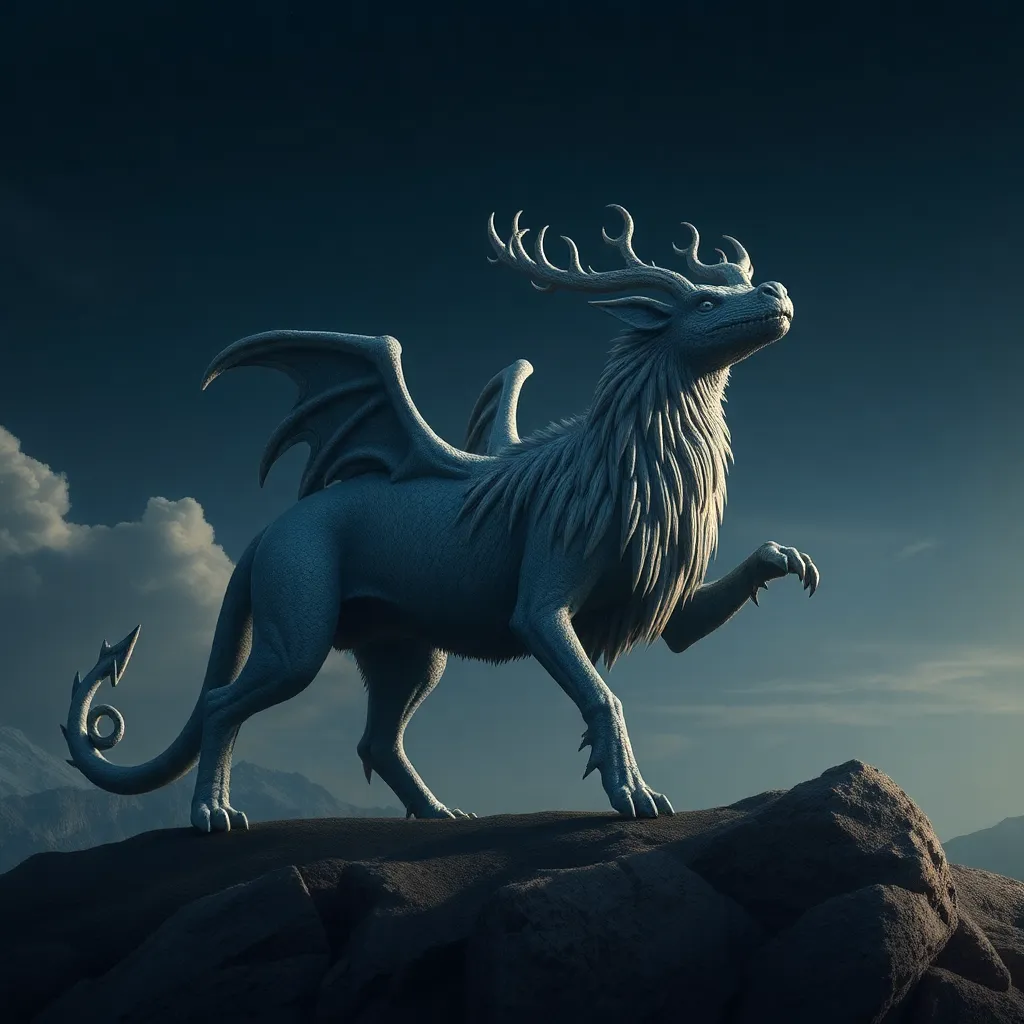The Mythical Creatures Encountered by Perseus: A Bestiary of Legends
I. Introduction
Perseus, one of the most celebrated heroes of Greek mythology, is known for his daring exploits and incredible bravery. His tales not only highlight his heroic deeds but also feature a fascinating array of mythical creatures that he encounters along his journey. These creatures, integral to his story, serve to illustrate the challenges he faced and the triumphs he achieved.
The importance of mythical creatures in Perseus’s tales cannot be overstated. They represent obstacles, allies, and lessons that shape his character and destiny. This bestiary aims to explore these legendary beings, examining their origins, characteristics, and significance in the broader context of Greek mythology.
II. The Gorgon Sisters: Medusa and Her Kin
The Gorgons, a trio of fearsome sisters—Medusa, Stheno, and Euryale—are among the most iconic figures in Greek mythology. With snakes for hair and a gaze that could turn anyone to stone, they embody terror and the supernatural.
Medusa, the most famous of the Gorgons, was once a beautiful maiden, cursed by the goddess Athena for desecrating her temple. This transformation into a monster was not just a punishment but also a metaphor for the loss of innocence and the consequences of hubris.
In Perseus’s quest to slay Medusa, he not only confronts a formidable foe but also undertakes a journey of self-discovery and courage. The Gorgons serve as both adversaries and symbols of the darker aspects of human nature that Perseus must overcome.
III. The Winged Horse: Pegasus
Pegasus, the majestic winged horse, is a creature of immense beauty and power. Born from Medusa’s blood when she was slain by Perseus, Pegasus symbolizes inspiration and the heights of creativity.
During his adventures, Perseus encounters Pegasus, who aids him in his journey. This relationship highlights the theme of partnership between hero and creature, showcasing how collaboration can lead to success in overcoming great challenges.
Pegasus is not only significant in Perseus’s narrative but also in Greek mythology as a whole. He represents the divine connection between mortals and the gods, inspiring poets and artists throughout the ages.
IV. The Kraken: A Sea Monster Encounter
The Kraken, a legendary sea monster, is often depicted as a gigantic octopus or squid. Though its origins are primarily Norse, its presence in various mythological tales has made it a prominent figure in the collective imagination.
In some versions of Perseus’s tale, he encounters a creature resembling the Kraken, which poses a significant threat during his adventures. This battle exemplifies the theme of man versus nature, highlighting the hero’s struggle against overwhelming odds.
The Kraken legend has had a lasting cultural impact, inspiring countless adaptations in literature, film, and art, symbolizing the unknown and the fearsome forces of the natural world.
V. The Chimaera: A Fiery Beast
The Chimaera is described as a monstrous creature with the body of a lion, the head of a goat protruding from its back, and a tail that ends in a serpent. This hybrid beast breathes fire, making it a formidable opponent.
Perseus’s encounter with the Chimaera is a testament to his bravery and skill as a warrior. The battle is not just a physical confrontation but also a representation of facing one’s fears and the chaos of life.
The defeat of the Chimaera carries symbolic weight, illustrating the triumph of order over chaos and the hero’s ability to conquer the monstrous aspects of existence, a theme prevalent in many myths.
VI. The Nymphs: Guardians of the Quest
Nymphs are divine spirits associated with nature, often depicted as beautiful maidens. They play a crucial role in Greek mythology, serving as guardians and guides for heroes on their quests.
In his journey, Perseus receives assistance from various nymphs who provide him with vital tools and wisdom. This divine intervention emphasizes the interconnectedness of mortals and immortals, showcasing how support from others can lead to success.
The significance of Nymphs in Perseus’s story reflects the importance of community and collaboration in overcoming challenges, reinforcing the idea that no hero journeys alone.
VII. The Hydra: A Multi-headed Challenge
The Hydra, a serpent-like monster with multiple heads, is a formidable creature that poses a unique challenge. Each time one head is severed, two more grow back, symbolizing the idea that some problems cannot be easily solved through brute force.
Perseus’s encounter with the Hydra tests his ingenuity and resilience. The metaphorical implications of battling the Hydra extend beyond the physical fight; it represents the struggle against persistent and multiplying challenges in life.
The Hydra serves as a powerful reminder of the importance of strategy, foresight, and perseverance in overcoming seemingly insurmountable obstacles.
VIII. Conclusion
The mythical creatures encountered by Perseus are not mere obstacles; they are rich symbols that add depth to his story. From the fearsome Gorgons to the majestic Pegasus, each creature contributes to the narrative, offering lessons and insights into the human condition.
The enduring legacy of these legends continues to captivate audiences today, reflecting our fascination with the mythical and the extraordinary. As we explore these tales, we uncover timeless truths about courage, collaboration, and the battle between order and chaos. The fascination with mythical creatures remains a vibrant part of modern culture, inspiring new interpretations and adaptations across various media.




